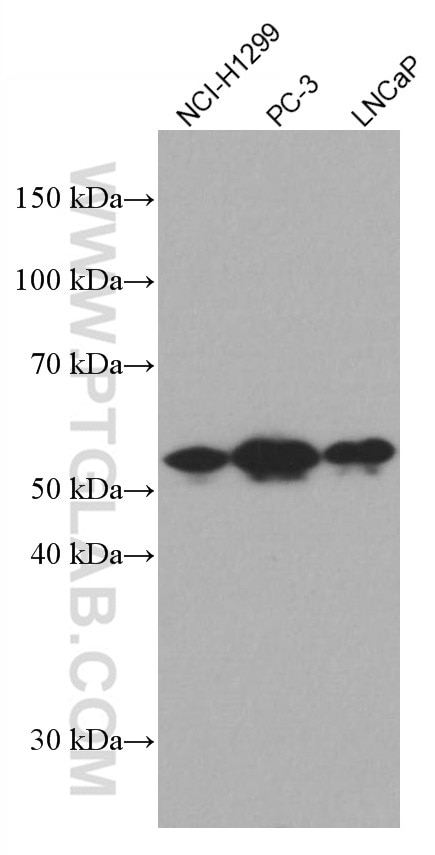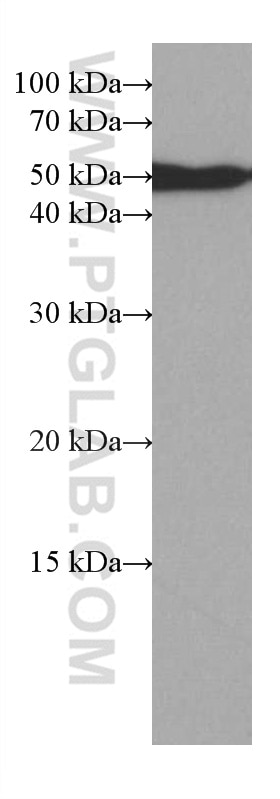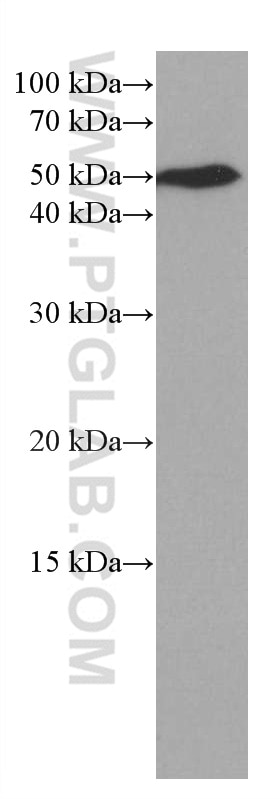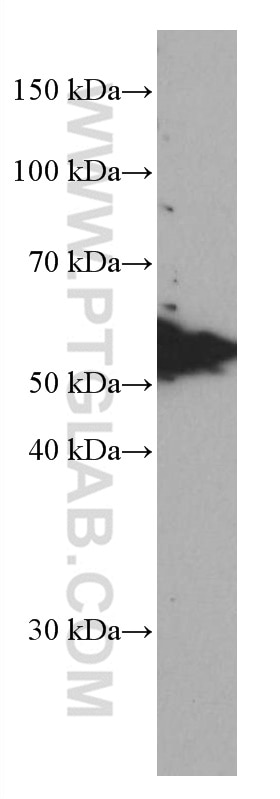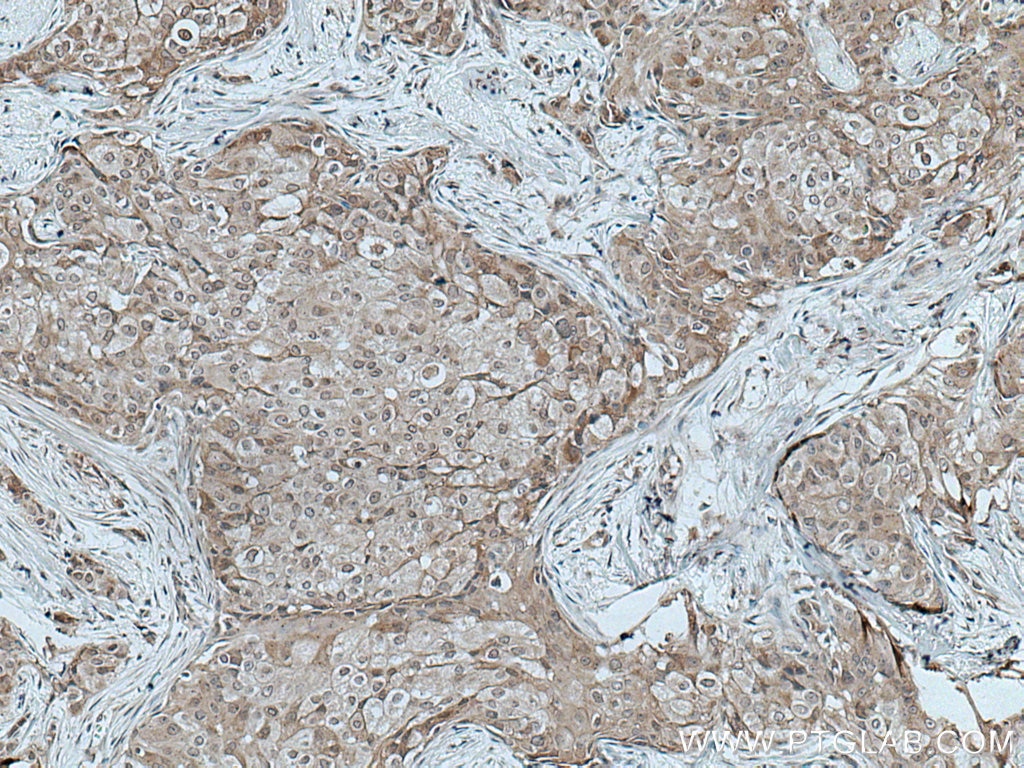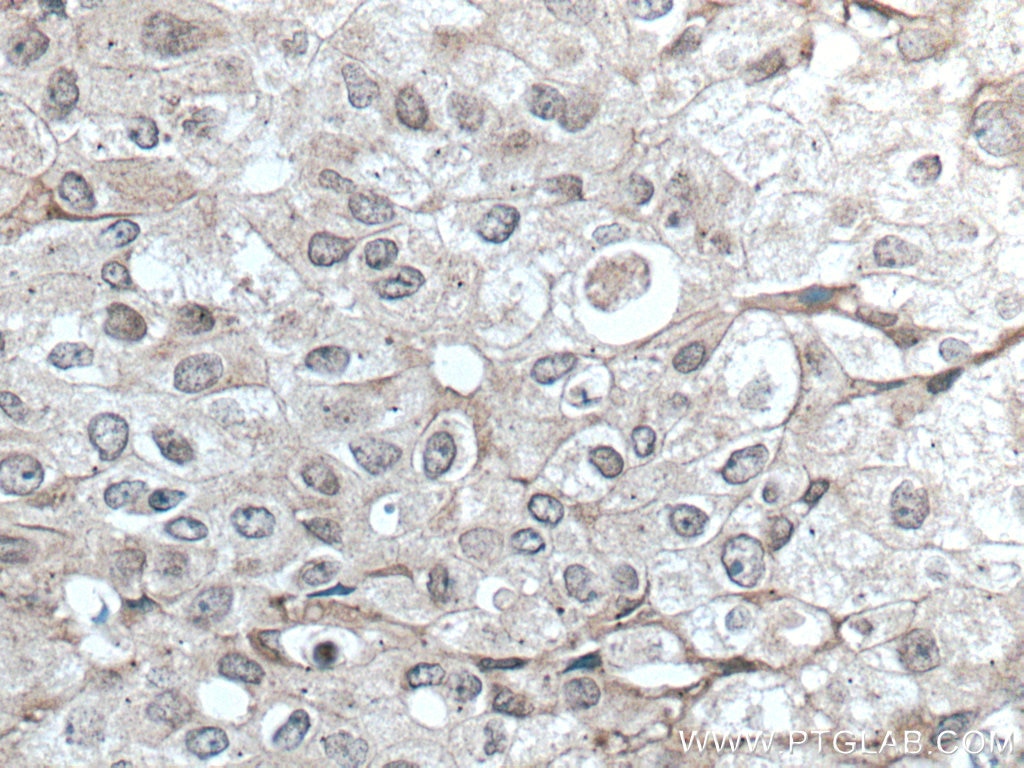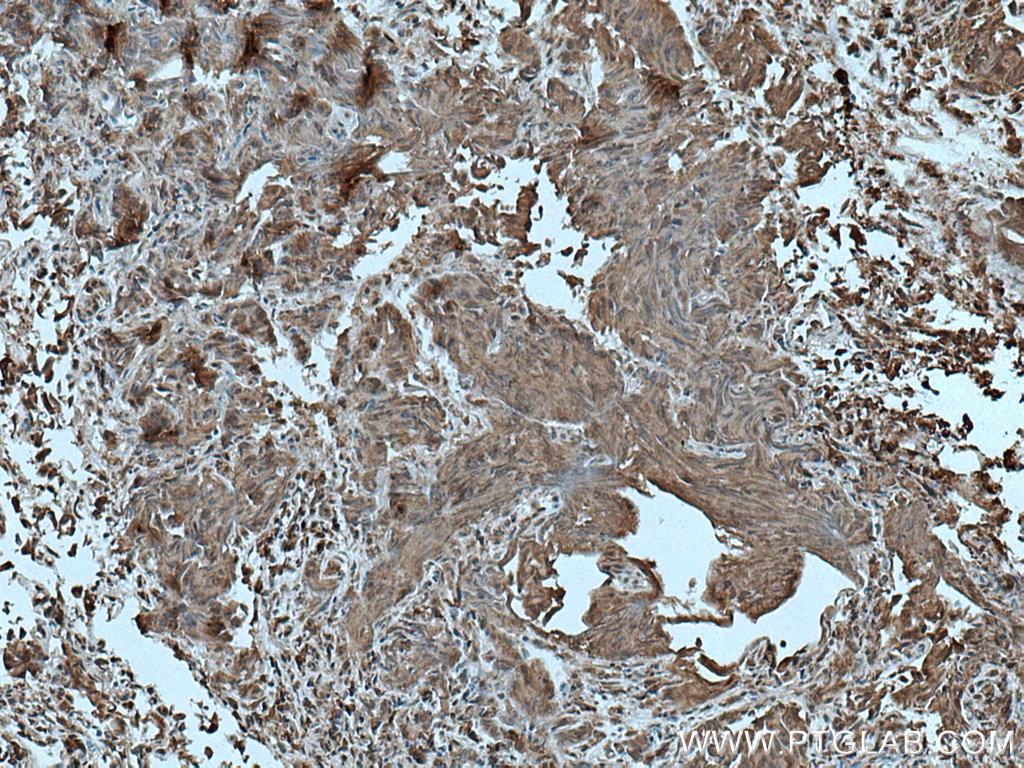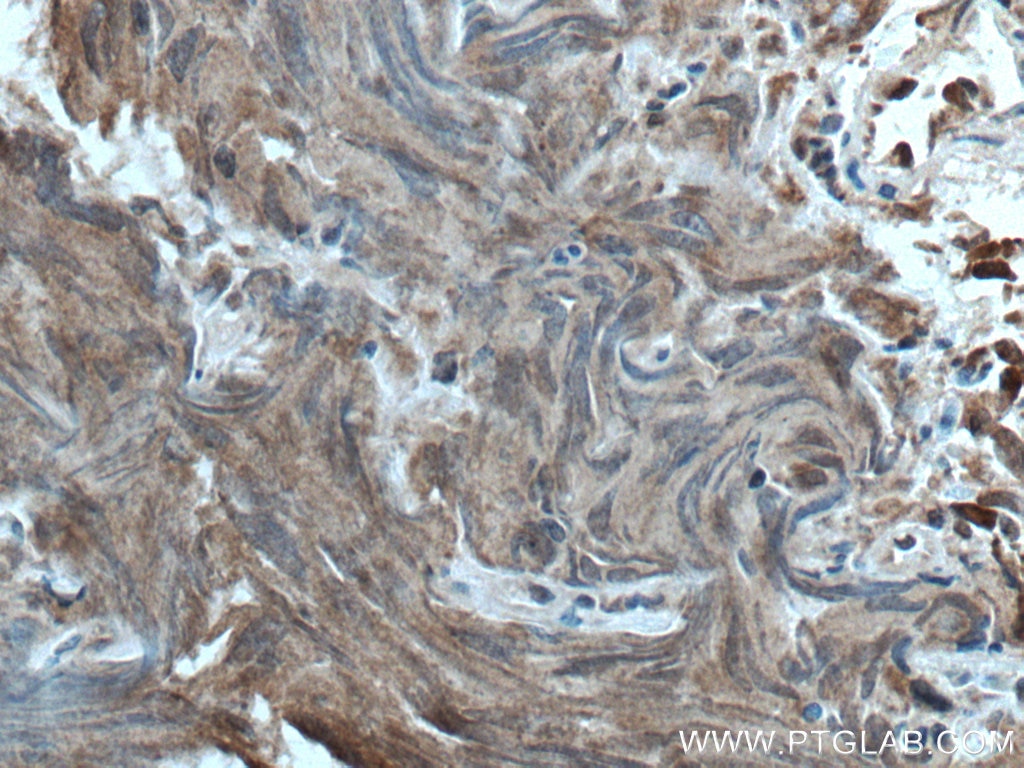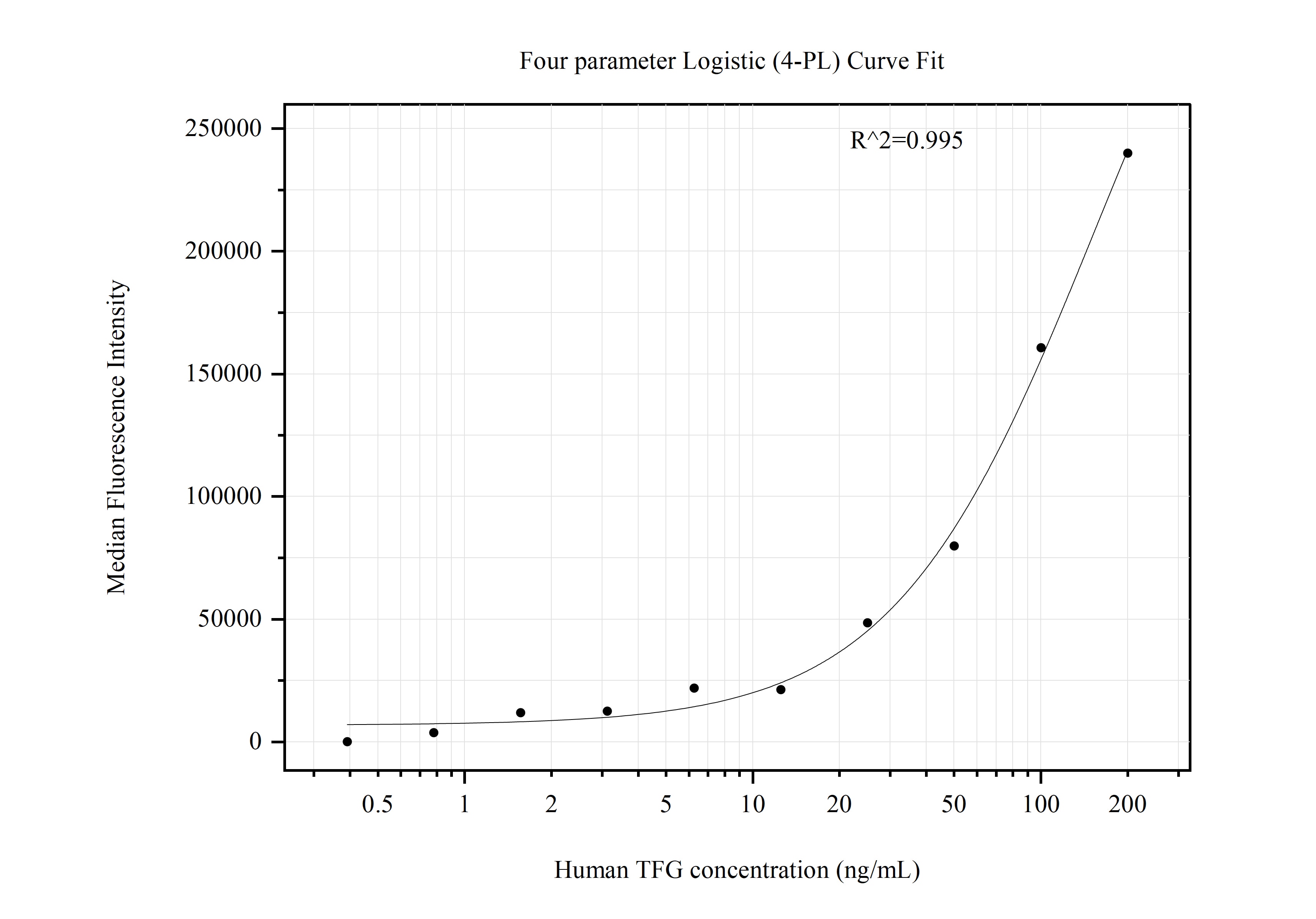Anticorps Monoclonal anti-TFG
TFG Monoclonal Antibody for WB, IHC, Cytometric bead array, Indirect ELISA
Hôte / Isotype
Mouse / IgG2b
Réactivité testée
Humain, porc
Applications
WB, IHC, Cytometric bead array, Indirect ELISA
Conjugaison
Non conjugué
CloneNo.
1B5B9
N° de cat : 66916-1-PBS
Synonymes
Galerie de données de validation
Informations sur le produit
66916-1-PBS cible TFG dans les applications de WB, IHC, Cytometric bead array, Indirect ELISA et montre une réactivité avec des échantillons Humain, porc
| Réactivité | Humain, porc |
| Hôte / Isotype | Mouse / IgG2b |
| Clonalité | Monoclonal |
| Type | Anticorps |
| Immunogène | TFG Protéine recombinante Ag27697 |
| Nom complet | TRK-fused gene |
| Masse moléculaire calculée | 400 aa, 43 kDa |
| Poids moléculaire observé | 50-55 kDa |
| Numéro d’acquisition GenBank | BC023599 |
| Symbole du gène | TFG |
| Identification du gène (NCBI) | 10342 |
| Conjugaison | Non conjugué |
| Forme | Liquide |
| Méthode de purification | Purification par protéine A |
| Tampon de stockage | PBS only |
| Conditions de stockage | Store at -80°C. 20ul contiennent 0,1% de BSA. |
Informations générales
Protein TFG (TRK-fused gene protein) plays a role in regulating phosphotyrosine-specific phosphatase-1 activity. Mutations in TFG may have important clinical relevance for current therapeutic strategies to treat metastatic melanoma. Defects in TFG are a cause of thyroid papillary carcinoma (TPC), a common tumor of the thyroid that typically arises as an irregular, solid or cystic mass from otherwise normal thyroid tissue. Hereditary motor and sensory neuropathy with proximal dominant involvement (HMSN-P) is an autosomal-dominant neurodegenerative disorder characterized by widespread fasciculations, proximal-predominant muscle weakness, and atrophy followed by distal sensory involvement. Recent genetic investigation indicates that formation of TFG-containing cytoplasmic inclusions and concomitant mislocalization of TAR DNA-binding protein 43 kDa (TDP-43) underlie motor neuron degeneration in HMSN-P. Pathological overlap of proteinopathies involving TFG and TDP-43 highlights a new pathway leading to motor neuron degeneration.
